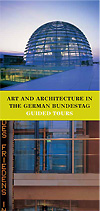Navigationspfad: Homepage > Art and History > Art > Artists
Strawalde
Jürgen Böttcher, alias Strawalde, was born in the town of Frankenberg in 1931, and lives and works in Berlin.
Böttcher, who calls himself Strawalde after Strahwalde in Upper Lusatia, where he spent much of his childhood and youth, was one of the leading oppositional painters in the GDR. In Dresden, he gathered round him a circle of like-minded spirits, including the painters Ralf Winkler, Peter Herrmann and Peter Graf, who were prevented from exhibiting and harassed in other ways by the GDR authorities. He became a mentor to Winkler, who adopted the pseudonym A.R. Penck and subsequently emigrated to the West.
Strawalde was unusual in enjoying success both as a painter and as a film director notable for his documentaries. As a filmmaker too, he constantly came into conflict with the regime and its ideological and aesthetic censors. Many of his films were banned, some being destroyed before their first showing.
Initially influenced by Picasso, Strawalde went on to develop an individual style that, to this day, encompasses abstraction, gestural brushwork, figurative and surreal elements, paintings executed in impasto and delicately coloured drawings. The artist wishes ‘to capture the world in free signs parallel to nature.’
The three items selected for the German Chancellor’s rooms in the Reichstag Building indicate that Strawalde’s work is so wide-ranging in form and content as to defy categorisation in conventional terms. The paintings date from 1991, a time of political and social upheaval in the wake of German reunification. They certainly refer to political developments, but they do this in a free, associative form that makes it difficult to reduce them to particular verbal concepts, as is the case in Tropic, a dark red painting enriched with elements of collage.
Its German title, Wendekreis, contains the word ‘Wende’ (turning point), which is commonly used to describe this major event in German history.
Quite different in its treatment of colour is Medea, its bold strokes of dark paint generating a powerful image of the sorceress of classical mythology. The grotesque procession of figures in the third work, titled 29.X.1991 after the date of its creation, reveals a sense of fun and a vein of whimsical poetry in Strawalde’s artistic makeup.
Each of these paintings possesses such a vigorous life of its own that the viewer is compelled to absorb them separately, accepting them as images drawn, in Strawalde’s words, ‘right from the heart of life’.


